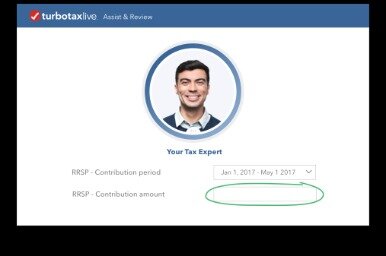Contents:


Understanding retained earnings is crucial for any business owner or investor who wants to analyze a company’s financial health accurately. By knowing how much profit has been kept over time and what factors contribute to those numbers changing, investors can make more informed decisions about where to put their money. Additionally, companies can use this information when making strategic choices regarding future investments or dividend payments. Once you have added net income to the beginning balance of retained earnings, subtract dividends paid out to shareholders during that same time period.

Consistent with the accounting for stock dividends, retained earnings should be charged for an amount equal to the fair value of the shares distributed. When shareholders have the option to elect cash or stock, the number of shares to be issued is a variable number. The amount of retained earnings capitalized for the entire distribution should be equal to the amount of the dividend had it been paid entirely in cash. It is rare that the fair value of the stock dividend would be less than the cash dividend; therefore, the cash dividend should be indicative of the minimum fair value of the shares issued.
These earnings form a part of the shareholders’ equity section of the balance sheet. The information on retained earnings can be found in the statement of retained earnings. The amount of the dividends and the timeline of payment are decided by the board of directors on the declaration date. The record date is the last date on which the shareholders owning shares of the company receive dividends. The first income statement line items start with the revenue, which is the money a company receives money for the sales of products and services.
This is because it is confident that if such surplus income is reinvested in the business, it can create more value for the stockholders by generating higher returns. Likewise, the traders also are keen on receiving dividend payments as they look for short-term gains. In addition to this, many administering authorities treat dividend income as tax-free, hence many investors prefer dividends over capital/stock gains as such gains are taxable.
This figure ($1.175 billion) shows us how much of Costco’s net income was retained by the company during the fiscal 2014 year. By definition, this is how much of its earnings Costco didn’t pay out in a dividend. Therefore, the company must maintain a balance between declaring dividends and retaining profits for expansion. When it comes to investors, they are interested in earning maximum returns on their investments. Where they know that management has profitable investment opportunities and have faith in the management’s capabilities, they would want management to retain surplus profits for higher returns.
Lenders want to lend to established and profitable companies that retain some of their reported earnings for future use. Even if the company is experiencing a slowdown in business activities, it can still make use of the retained earnings to pay down its debt obligations. To find net income using retained earnings, you need to subtract the previous financial period’s recorded retained earnings called beginning retained earnings and add dividends back in.
By the time a company’s financial statements have been released, the dividend is already paid, and the decrease in retained earnings and cash are already recorded. In other words, investors will not see the liability account entries in the dividend payable account. In financial modeling, it’s necessary to have a separate schedule for modeling retained earnings. The schedule uses a corkscrew type calculation, where the current period opening balance is equal to the prior period closing balance. In between the opening and closing balances, the current period net income/loss is added and any dividends are deducted.
In the long run, such initiatives may lead to better returns for the company shareholders instead of those gained from dividend payouts. Paying off high-interest debt also may be preferred by both management and shareholders, instead of dividend payments. Profits give a lot of room to the business owner or the company management to use the surplus money earned. This profit is often paid out to shareholders, but it can also be reinvested back into the company for growth purposes. A stock dividend is a payment to shareholders that is made in additional shares rather than in cash. The ultimate effect of cash dividends on the company’s balance sheet is a reduction in cash for $250,000 on the asset side, and a reduction in retained earnings for $250,000 on the equity side.
Wal-Mart de México. de (BMV:WALMEX) Could Be A Buy For Its Upcoming Dividend.
Posted: Fri, 31 Mar 2023 07:00:00 GMT [source]
Return on equity is a measure of financial performance calculated by dividing net income by shareholders’ equity. Over the same duration, its stock price rose by $84 ($112 – $28) per share. During the same period, the total earnings per share was $13.61, while the total dividend paid out by the company was $3.38 per share. As an investor, one would like to know much more—such as the returns that the retained earnings have generated and if they were better than any alternative investments. Additionally, investors may prefer to see larger dividends rather than significant annual increases to retained earnings. Retained earnings are the amount of net income left over for the business after it has paid out dividends to its shareholders.
A well laid out financial model will typically have an assumptions section where any return of capital decisions are contained. Managers of corporations have several types of distributions they can make to the shareholders. A share buyback is when a company uses cash on the balance sheet to repurchase shares in the open market. A dividend is a share of profits and retained earnings that a company pays out to its shareholders and owners. When a company generates a profit and accumulates retained earnings, those earnings can be either reinvested in the business or paid out to shareholders as a dividend.
That is the closing balance of the retained earnings account as in the previous accounting period. For instance, if you prepare a yearly balance sheet, the current year’s opening balance of retained earnings would be the previous year’s closing balance of the retained earnings account. A dividend should be recorded when it is declared and notice has been given to the shareholders, regardless of the date of record or date of settlement.
When Shouldn’t You Pay a Premium For a Growing Company?.
Posted: Mon, 03 Apr 2023 07:00:00 GMT [source]
Therefore, net income becomes a significant component while making retained earnings calculations. A dividend can be the value of the stocks, the cash value, or the sum of both values. The Structured Query Language comprises several different data types that allow it to store different types of information… With more than 15 years of small business ownership including owning a State Farm agency in Southern California, Kimberlee understands the needs of business owners first hand.
Other – other, less common, types of financial assets can be paid out as dividends, such as options, warrants, shares in a new spin-out company, etc. There are various types of dividends a company can pay to its shareholders. Below is a list and a brief description of the most common types that shareholders receive. Retained earnings are a company’s net income from operations and other business activities retained by the company as additional equity capital. They represent returns on total stockholders’ equity reinvested back into the company.
The statement can be prepared to cover a specified cycle, either monthly, quarterly or annually. In the United States, it is required to follow the Generally Accepted Accounting Principles . Some part of the total dividend can be paid in cash while the rest can be in form of the stock. Find out the different types of dividends and where distributions are in financial statements.
Most of the time, the number itself may not mean a lot unless it is compared with other values or examined as a trend over time. A company’s net income can be calculated from its retained earnings as long as information on paid dividends is also available, according to the Corporate Finance Institute. The details on the retained earnings can be found in the statement of retained earnings.
Net retained earnings is the difference between a firm’s total revenue and expenses. At the same time, retained earnings are the sum the company has after it deducts the dividend liabilities and commitments from the net income. Any changes or movements with net income will directly impact the RE balance. Factors such as an increase or decrease in net income and incurrence of net loss will pave the way to either business profitability or deficit. The Retained Earnings account can be negative due to large, cumulative net losses. Bench explains that this can be done by finding the retained earnings at the end of the period and then subtracting the retained earnings at the beginning of the period.
CNB Financial Corporation Reports First Quarter 2023 Results.
Posted: Mon, 17 Apr 2023 20:30:00 GMT [source]
Statutory restrictions may limit the timing and amount of dividends that can be declared to shareholders. Typically, a reporting entity is subject to the laws of the state in which it is incorporated. The diversity of dividend statutes across jurisdictions makes it impracticable to state a general rule on the amounts available for dividends. However, a common restriction is that dividends may not be paid if doing so would render the reporting entity insolvent.
In most cases, especially when dealing with companies that have been in business for many years, retained earnings is the largest component. Stock dividends, on the other hand, are the dividends that are paid out as additional shares as fractions per existing shares to the stockholders. For instance, a company may declare a $1 cash dividend on all its 100,000 outstanding shares. Accordingly, the cash dividend declared by the company would be $ 100,000. In fact, both management and the investors would want to retain earnings if they are aware that the company has profitable investment opportunities. And, retaining profits would result in higher returns as compared to dividend payouts.
These expenses often go hand-in-hand with the manufacture and distribution of products. For example, a company may pay facilities costs for its corporate headquarters; by selling products, the company hopes to pay its facilities costs and have money left over. Net sales are calculated as gross revenues net of discounts, returns, and allowances. The decision to retain the earnings or distribute them among shareholders is usually left to company management. Net income is the difference between the total expenses and the total revenue. The expenses include material costs, general and administrative expenses, salaries of employees, depreciation, amortization, interest payable on debt, and taxes.
As a business owner or accountant, it’s essential to understand how to properly calculate and present your company’s financial information. In this blog post, we will explore whether retained earnings go on the income statement and provide a step-by-step guide on how to calculate them accurately. Whether you’re an aspiring entrepreneur or an experienced professional, understanding retained earnings is critical for making informed decisions about your business’s finances. And as a bonus, we’ll also touch upon how procurement plays into this topic. Younger companies often tend to operate in the red during the early years of business, while they invest in and build the company. Now that you understand the general relationship between dividends and retained earnings, let’s delve into the nitty-gritty details of how cash and stock dividends affect the balance sheet.

Investopedia does not include all offers available in the marketplace. Full BioCierra Murry is an expert in banking, credit cards, investing, loans, mortgages, and real estate. Then, mark the next line, with the words ‘Retained Earnings Statement’. Finally, provide the year for which such a statement is being prepared in the third line . Capitalization is an accounting method in which a cost is included in the value of an asset and expensed over the useful life of that asset.
Revenue and retained earnings are correlated since a portion of revenue ultimately becomes net income and later retained earnings. Here we’ll go over how to make sure you’re calculating retained earnings properly, and show you some examples of retained earnings in action. For example, during the period from September 2016 through September 2020, Apple Inc.’s stock price rose from around $28 to around $112 per share. All of the other options retain the earnings for use within the business, and such investments and funding activities constitute retained earnings. Companies may choose to use their retained earnings for increasing production capacity, hiring more sales representatives, launching a new product, or share buybacks, among others. Below is a short video explanation to help you understand the importance of retained earnings from an accounting perspective.

The statement of retained earnings is also known as the statement of owner’s equity. This can be provided as an additional statement either with the income statement or the balance sheet. The statement of retained earnings increases each period with additional net income not paid out as dividends. This additional fund each period is the retained earnings for each period. Positive net income each period will enhance the retained earnings, whereas negative net income or loss will decrease the value of the retained earnings. Retained earnings can also decrease if the company has paid out more dividends than the net income in a given period.
For solvent reporting entities, payment of dividends from retained earnings is almost always permissible. In the US, state law typically governs corporate activities, including the payment of dividends. Some states allow dividends to be paid from current earnings despite an accumulated deficit from past operations; these are sometimes referred to as nimble dividends.

"Sky Tour" company has successfully been working in the tourist market of Tajikistan since February 2011. Despite a relatively short period of activity, the company has thousands of organized trips and satisfied customers. We provide a wide range of tourist services, from excursions around Tajikistan, to round-the-world travel. We organize travel for every taste and depending on the wishes, we select the most ideal variant for the tourist. Managers of the company "Sky Tour" are highly qualified professionals, experts in their work and work execution is impeccable. We track every stage of the journey of our tourists and in the event of unforeseen situations we quickly resolve the issues that have arisen. "Sky Tour" company successfully cooperates with tour companies in all regions of Tajikistan, and many Tour Operators in all corners of the world which gives an opportunity to expand the range of services and choice of countries for recreation. Our goal is to make your trip highly comfortable, safe, and interesting. "Sky Tour" company is a member of the TATO (Tajik Association of Tour Operators) and is accredited with the Ministry of Foreign Affairs of the Republic of Tajikistan.